Teach the Techniques of Media Manipulators
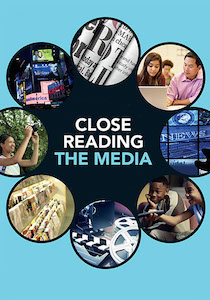 One of my favorite definitions of “media literacy” originates from the Canadian province of Ontario. In it, there is this sentence:
One of my favorite definitions of “media literacy” originates from the Canadian province of Ontario. In it, there is this sentence:
“Media Literacy is concerned with helping students develop an informed and critical understanding of the nature of mass media, the techniques used by them and the impact of these techniques.”
In this column, which includes links to many helpful resources, my aim is to call attention to some of those techniques in hopes you will consider helping your students become better critical thinkers about media messages and their makers. I hope you will begin to see this ability as a true survival skill in the social media-saturated world where we now live.
Right now, somewhere on the internet, someone is working to create a media message designed to fool media illiterate people. Many of these naïve people (including lots of our students) will read or see this message and not question it. Even worse, they will forward it via social media or spread it by other means without checking on its authenticity.
While researchers and public policy experts continue to debate about the dimensions of the “fake news” phenomenon, the potential long-term negative impact of such media illiteracy clearly should be of concern to educators. In an era of unbridled social media, verification for “facts” becomes not only important but absolutely necessary.
See my Fake News Remedy Recommendations for more ideas on helping your students become media savvy about current events.
Has the situation improved since 2016? Some researchers argue that the 2016 post-election debate about fake news exaggerated the problem. This 2019 story at the Medium web platform presents data from researchers who make that case – and also contend that there was less fake news activity before the 2018 mid-term elections than in 2015-16.
Even so, it’s clear that the attention given to fake news assures it will be part of the social fabric for the foreseeable future. We know that young people (and the elderly) are most susceptible to false claims and fake imagery. The classroom is one of the best places we can help tweens and teens sharpen their media savvy and strengthen their consumer and citizenship skills.
Techniques in Political Advertising
With the start of another US presidential campaign season underway, and dozens of Democratic Party candidates vying for primary spots and the opportunity to challenge President Trump, now would be a good time to help your students learn to recognize the various techniques used in political ads – techniques that are not limited to any particular political party or faction.
Here is one example. In 2008, then Senator Barack Obama released an ad entitled “The Country I Love,” the first television ad of his successful general election campaign for the Presidency. Watch it in the CSPAN archives here. Students might consider what the Obama campaign’s goals were for these opening themes and the way they are presented.
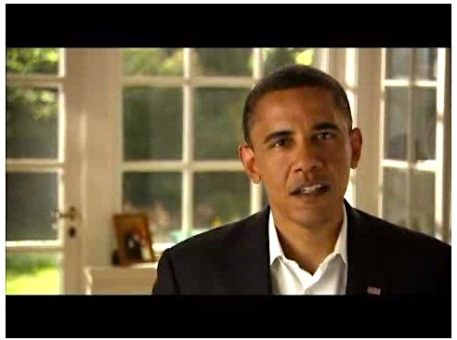
Without any guidance, your students may not notice anything unusual about this ad. But, as a media educator, I would advise students to notice the music, for example: soft guitar strums in the background. Notice also the candidate is informally dressed and appears in a living room type setting. Ask students what feeling that might be designed to evoke.
[On the day this ad first aired, comedian Jon Stewart showed it to his TV audience and then proceeded to read a list of the symptoms of mad cow disease with the same music playing in the background. He concluded that “anything would sound good” accompanied by this soothing guitar.]
I have created a downloadable Political Ad Analysis Worksheet designed to help your students recognize and pay attention to all of the techniques political consultants are sure to use in the next 16 months. (Read my 2016 column on visual techniques: The Image is Everything.)
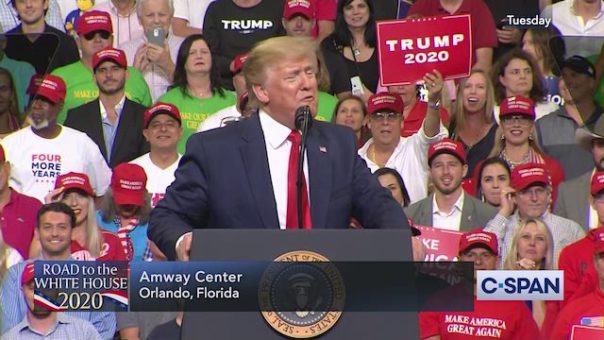
As the 2020 presidential campaign gathers momentum, candidates of both parties are using “polioptics” to position themselves in the minds of American voters. President Trump chose to make his formal announcement “rally style,” a format that proved highly successful four years ago.
Help Students Understand How Ads Work
Our students are exposed to literally thousands of media messages and ads every week. Yet many of them may not fully recognize how those marketing messages get past their “thinking brains.” (I wrote more about this in a previous column on the role of emotion in ads, where I talk about the four key human emotions marketers target today: happy, sad, afraid/surprised and angry/disgusted.)
Today’s students also need to be aware of how advertising targets them on the devices they use frequently. Today’s AI technologies make it easy to track their search habits and their fondness for interacting with social media sites makes them valuable to advertisers both as customers and spreaders and promoters of advertising material.
I frequently ask students: what is the purpose of advertising? And the most common answer I get is: to sell something. But selling is not really the purpose of advertising. Now that may surprise you. The real purpose of advertising is to persuade.
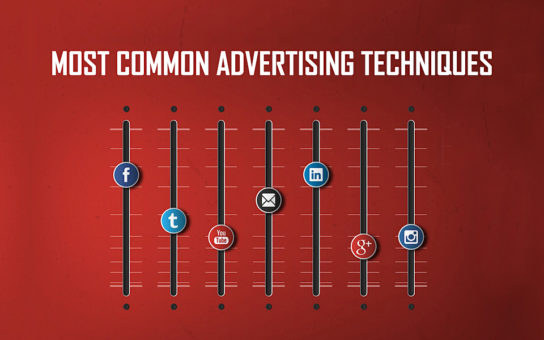
What are the four most common techniques used in these social media platforms? Repetition, claims, association, and promotions. Source.
Can your students recognize the various persuasive propaganda strategies used in advertising? This article describes 13 of the more common ad techniques. Similarly, this brief video, aimed at students and produced by the Federal Trade Commission, focuses on several of the techniques. (Also see the FTC article, It’s All About the Technique.)
Media Literacy: It’s Not “Optional”
Today’s middle schoolers are sometimes described as digital natives, but simply growing up digital does not prepare our students to recognize techniques of persuasion aimed at them by the media makers.
In the 21st century, LITERACY has to encompass media and visual literacy. It’s not an extra bit of content that we can safely ignore in the crowded curriculum. I urge teacher and school leaders in my writing and workshops to take the time to talk together about how these vital contemporary skills can be embedded in today’s cross-curricular teaching and learning experience. Future generations must become better consumers of media and it all starts with you, the teacher.
____________________________________
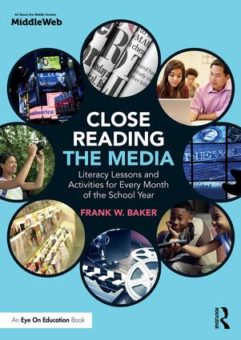 Frank Baker is the author of Close Reading The Media: Literacy Lessons and Activities for Every Month of the School Year (2017, Routledge/MiddleWeb). He has conducted hundreds of workshops for educators at schools, districts and conferences. He can be reached by email at fbaker1346@gmail.com and on Twitter.
Frank Baker is the author of Close Reading The Media: Literacy Lessons and Activities for Every Month of the School Year (2017, Routledge/MiddleWeb). He has conducted hundreds of workshops for educators at schools, districts and conferences. He can be reached by email at fbaker1346@gmail.com and on Twitter.

































